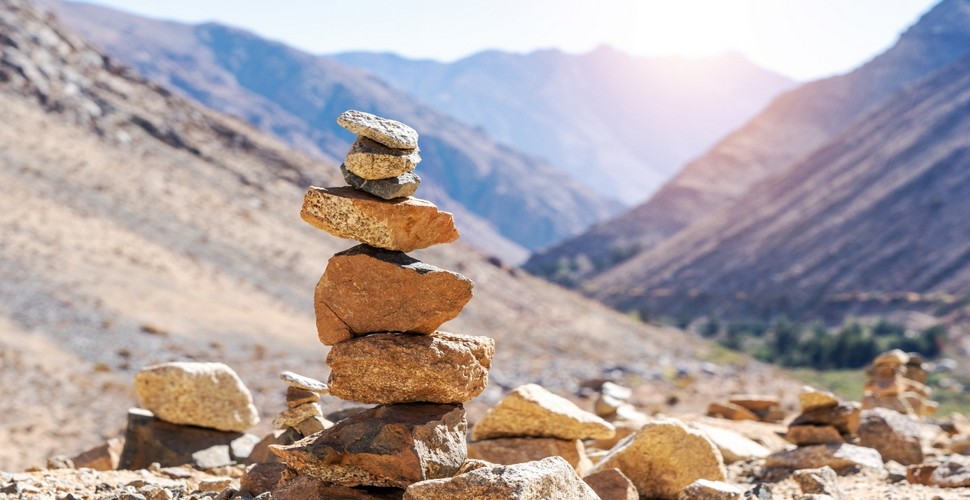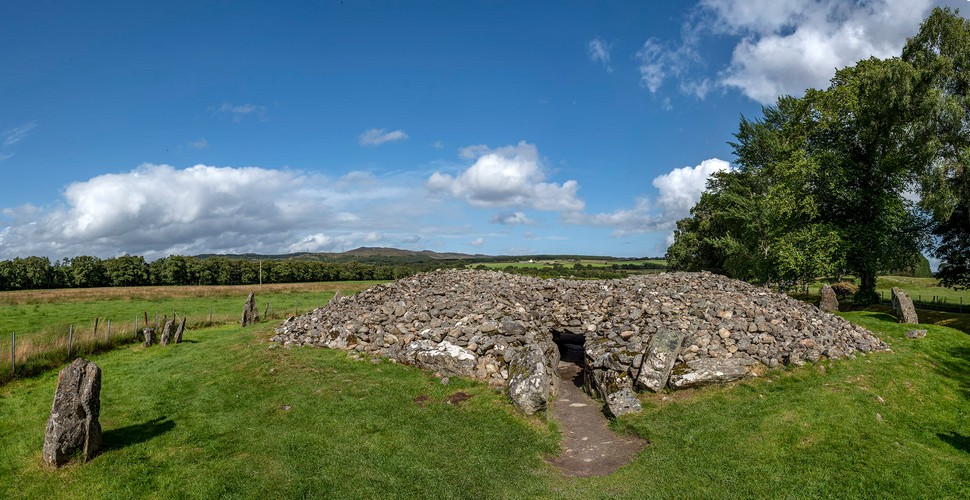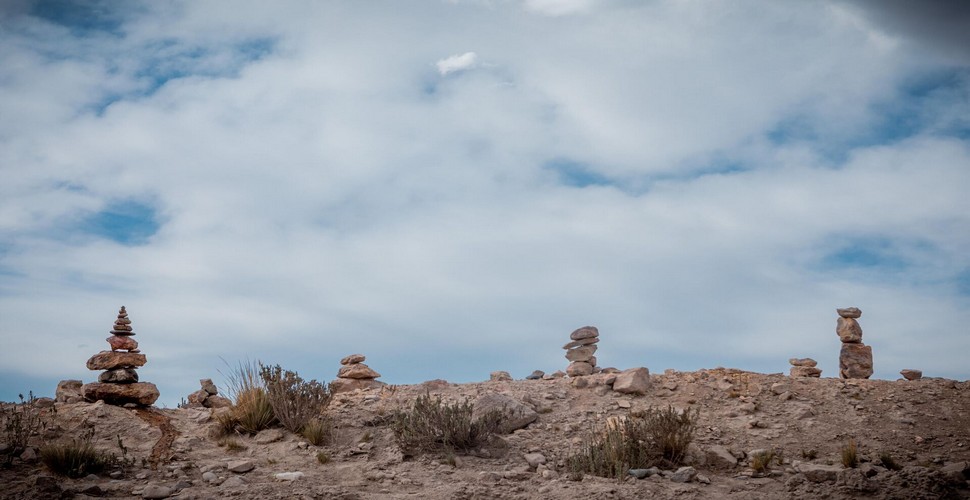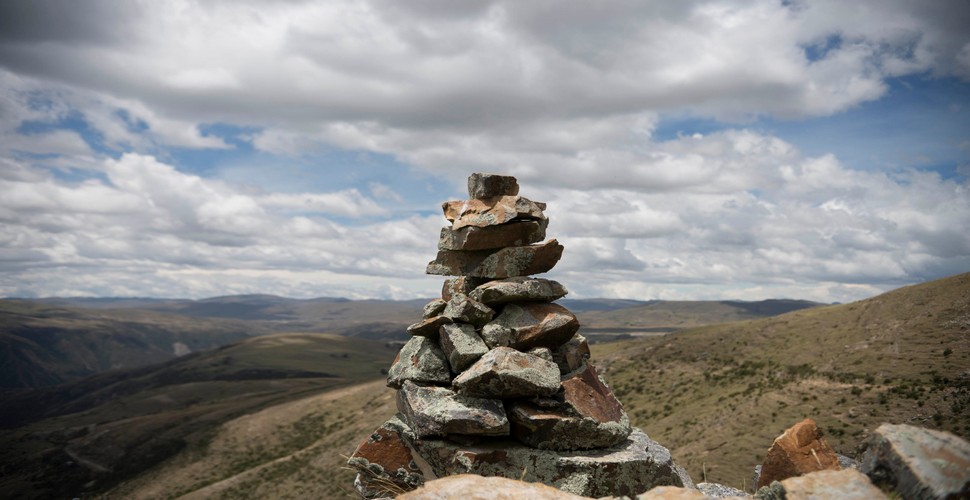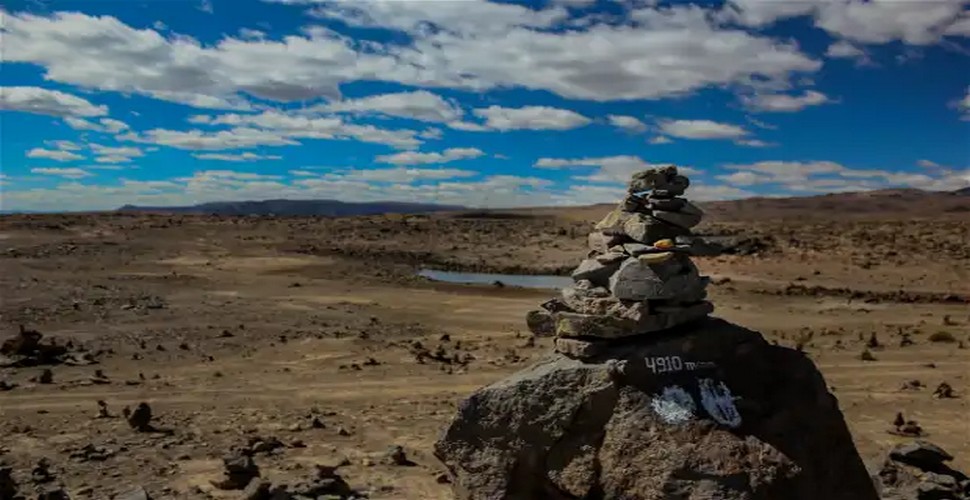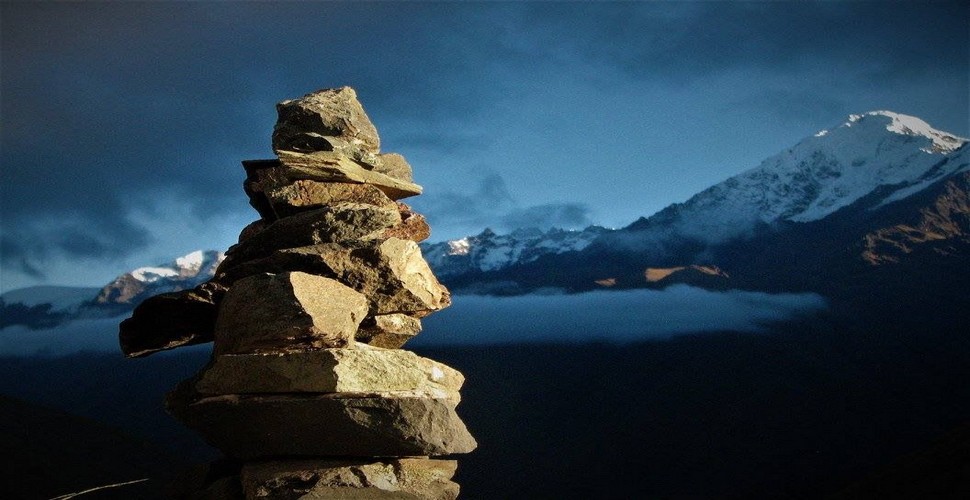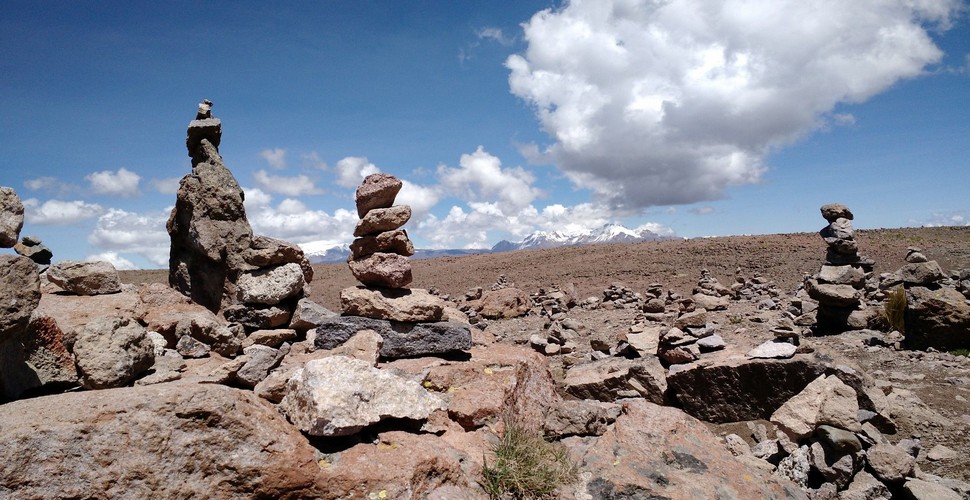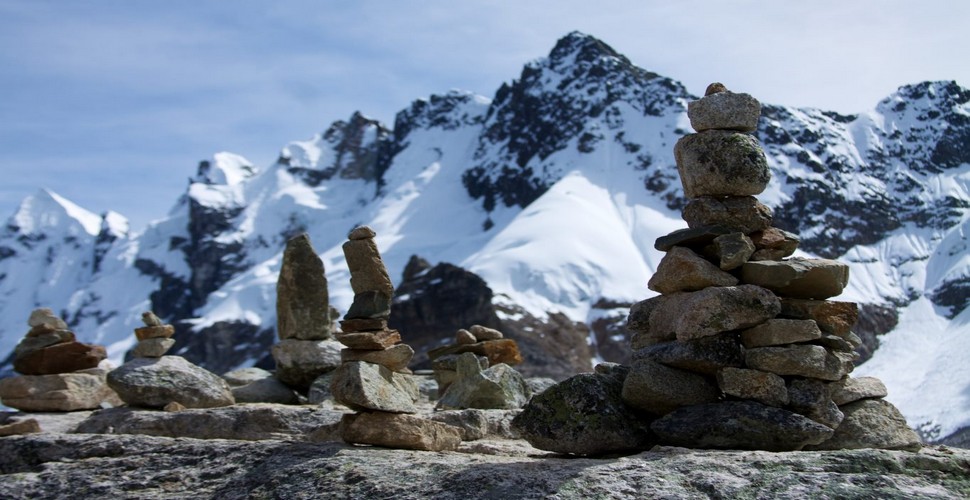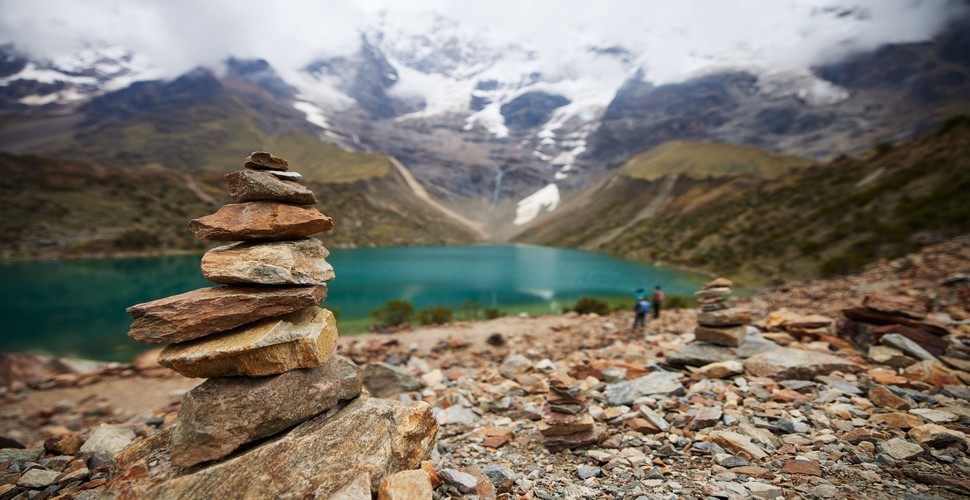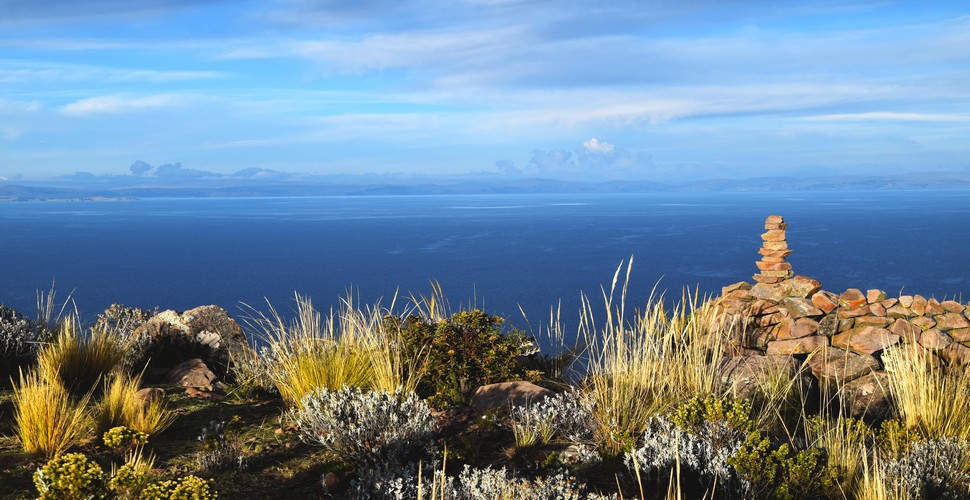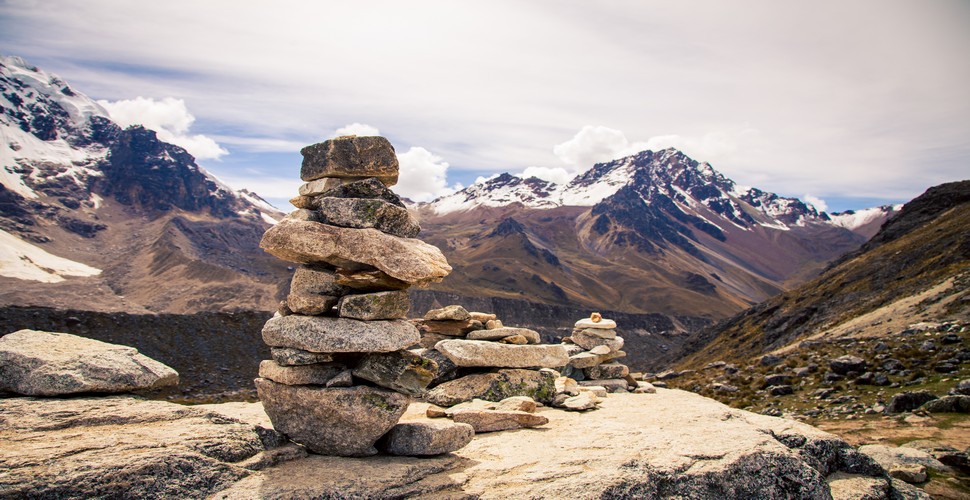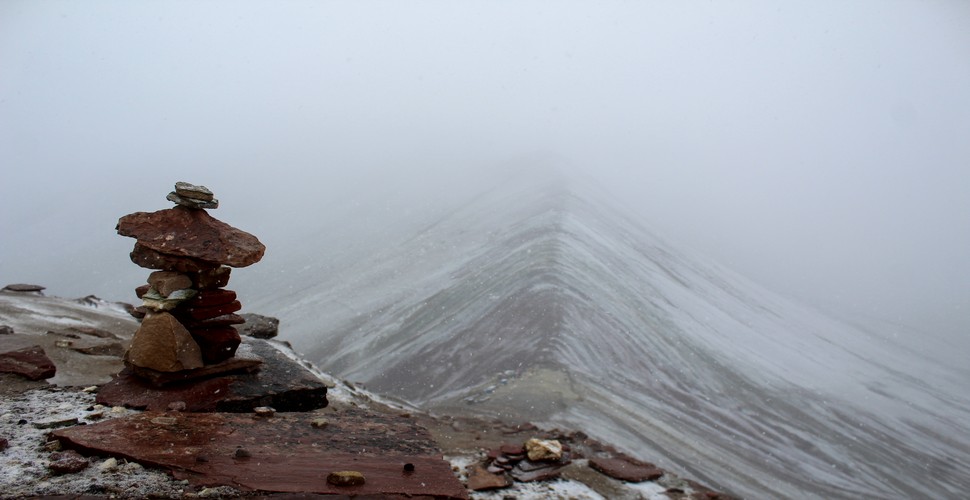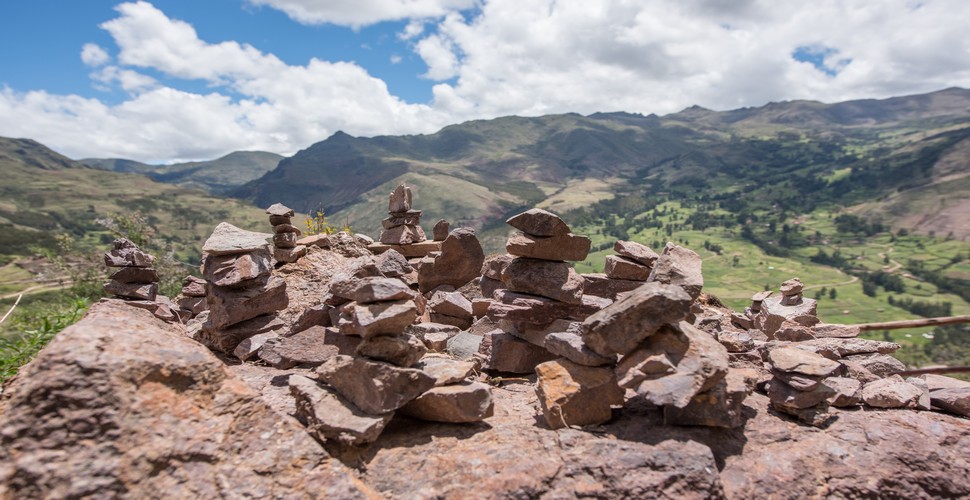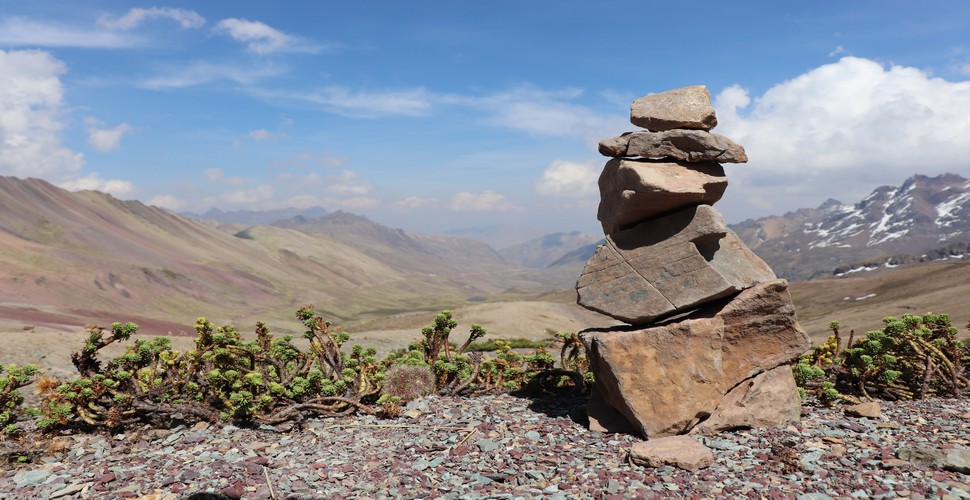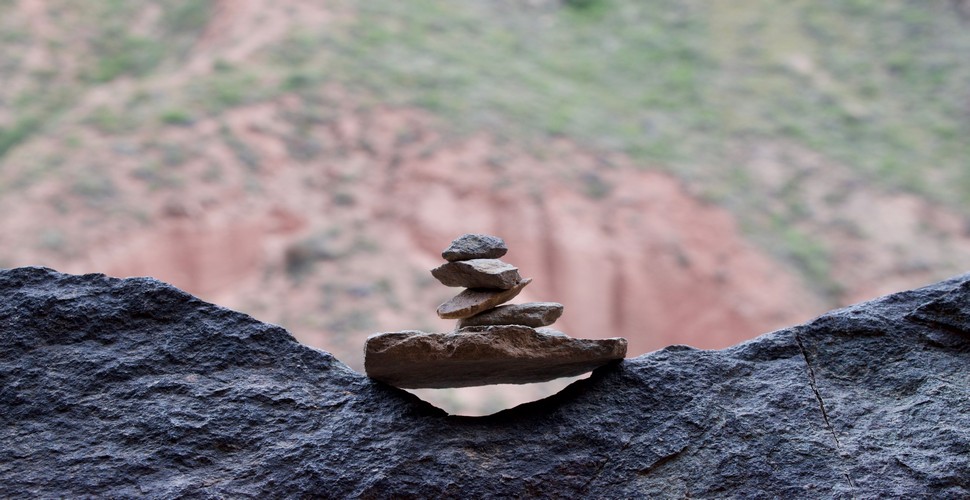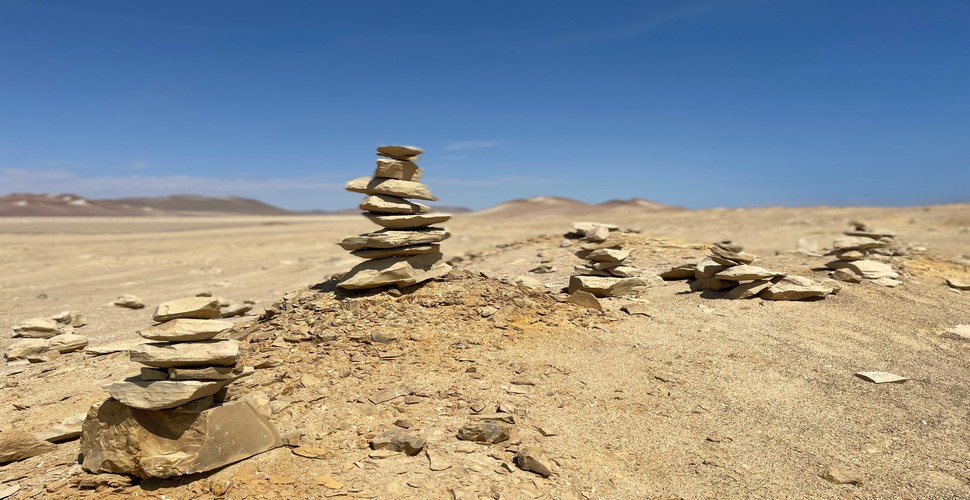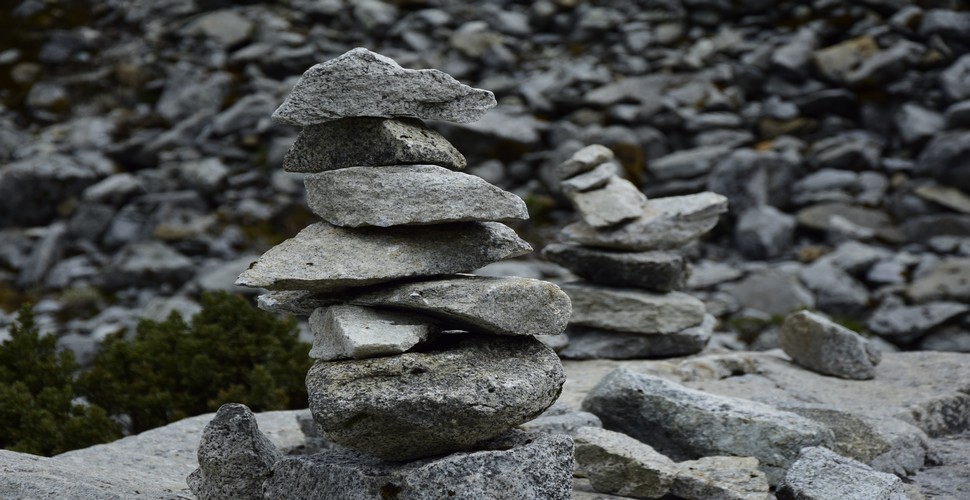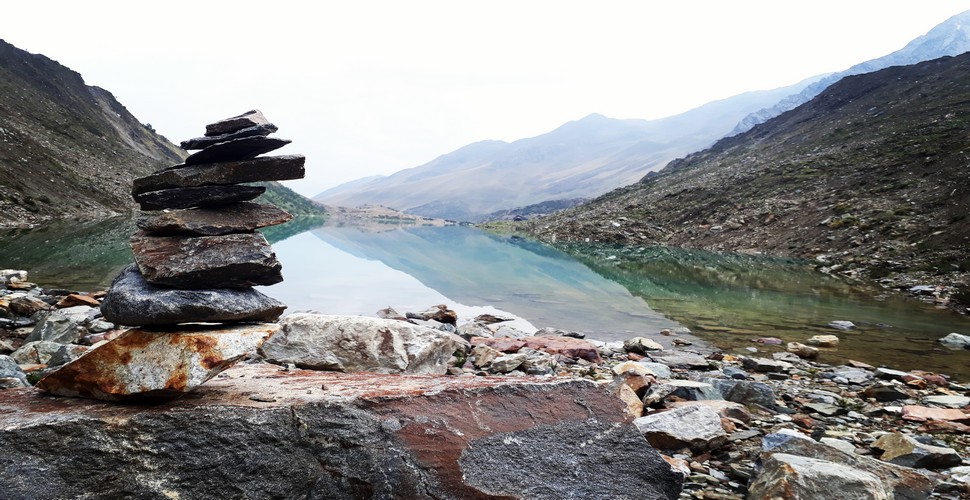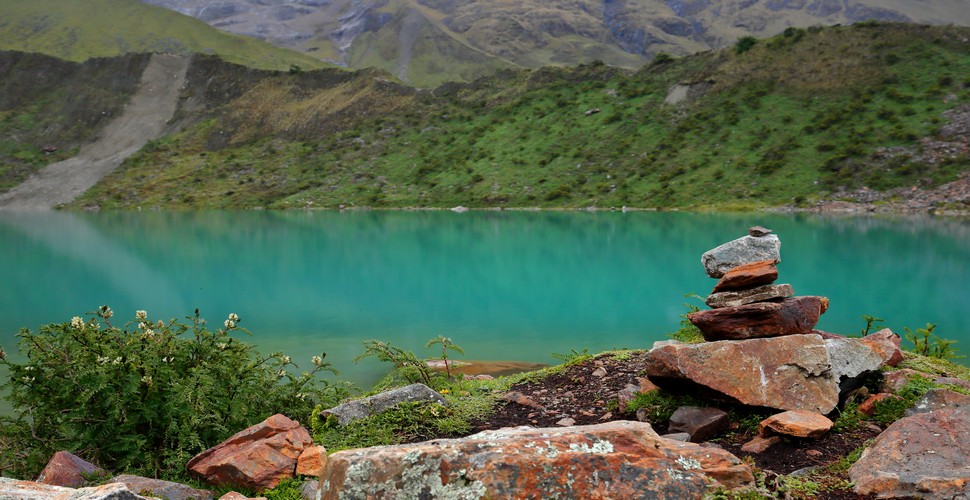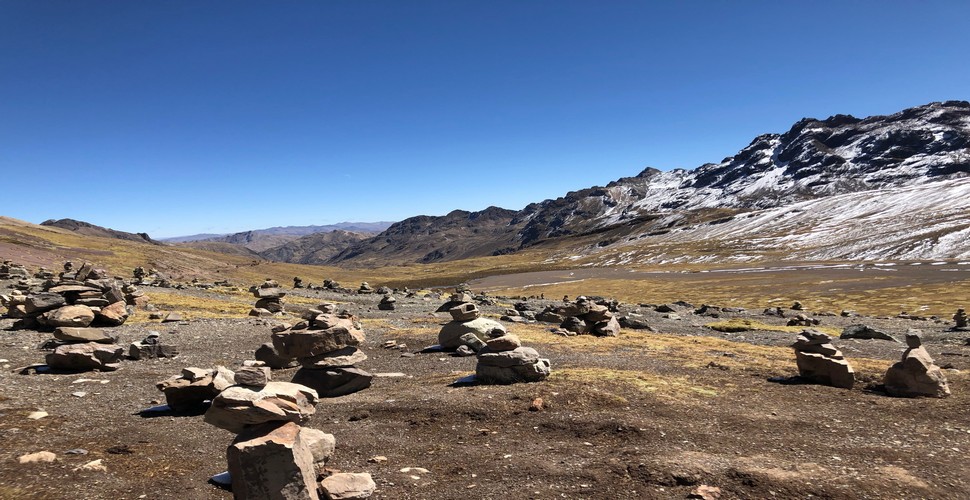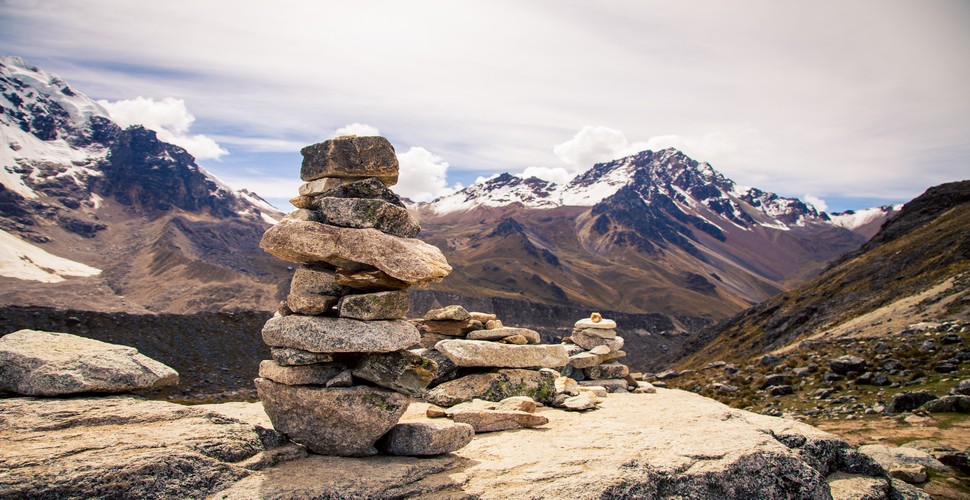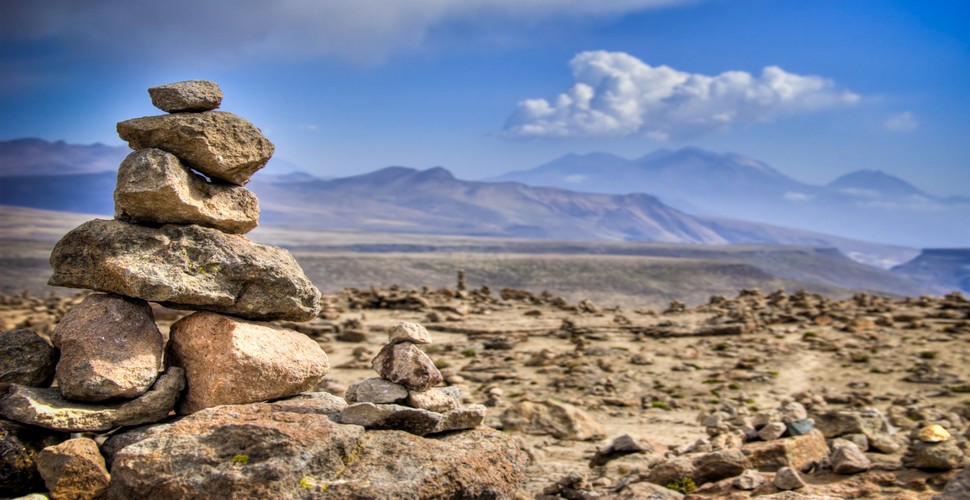

Claire Dean
Travel in South America is a joy to behold. The rich variety of destinations, experiences, landscapes and geography fascinated me so much, that I chose to relocate here, over 20 years ago! The best thing I ever did! Allow me to share my knowledge and passion for Central and South America with you and help you plan your holiday of a lifetime!

APACHETAS IN PERU- WHAT ARE THESE MYSTERIOUS STONE TOWERS?
Written by:Claire Dean
Last Update: 2025-02-27
In recent times, a seemingly innocent trend has been gaining momentum, leaving a detrimental mark on the coastal ecosystems of Baleares and Canarias in Spain. This phenomenon involves the act of stacking small stones into pyramid-like structures—a modern equivalent of "Fulano was here." This practice mirrors the graffiti of the '80s or the carved initials on trees, but it comes with serious ecological implications.
Apachetas
The Art Of Stacking Stones
Interestingly, the art of stacking stones holds deep cultural and historical roots around the world. In Asia, particularly within Buddhist and Taoist cultures, piling stones is a symbolic representation of internal balance and harmony. Similarly, the indigenous cultures of North and South America, such as the Andean civilizations, used to construct similar mounds of stones at sacred sites. In places like Ireland and Scotland, the tradition of cairns has its origins in Celtic heritage.
Corrimoney Cairn, Scotland
The Apachetas in Peru
In Peru, there are many sites you may visit where you can see apachetas, en route to the Colca Canyon for example. When it comes to Peru, the practice of piling stones takes on a more profound and unique significance through the concept of "apachetas."
Apachetas on the way to Colca Canyon
Apachetas - Beyond Ecological Harm
In Peru, apachetas are more than just stacks of stones; they are a window into the ancient spiritual and cultural traditions of the Andean people. Apachetas are stone towers erected as a form of tribute to the mountains and spirits of the land. These structures are an integral part of the indigenous Andean belief system, serving as offerings to the Apus (mountain deities) and as markers along pilgrimage routes.
Apacheta in The Andes
Apachetas embody the harmony between humans and nature, reflecting the Andean worldview that considers the environment as a living entity deserving of respect and reciprocity. Unlike the haphazard stone stacking observed in some coastal regions, apachetas are purposefully constructed at specific locations and hold a profound cultural and spiritual significance.
Many Apachetas on the Altiplano
Cultural and Spiritual Roots
The construction of apachetas is deeply rooted in the Quechua and Aymara cultures, the two main indigenous groups of the Andes. These stone structures are often built at high altitudes, where the Andean people believe the spirits of the mountains reside. To the Andean communities, apachetas are a means of communication with these spirits, a way to express gratitude, make offerings, and seek blessings.
Apacheta to the Apus
Additionally, apachetas play a crucial role in traditional Andean pilgrimages. These journeys, often taken by local communities and tourists alike, involve traveling to sacred sites and mountain peaks. Along the way, pilgrims construct apachetas as markers, symbolic gestures of their connection to the land and their reverence for the Apus.
High Elevation Apacheta Towers
Preserving Tradition and Ecology
As the world becomes increasingly aware of the ecological consequences of seemingly harmless actions, it's essential to approach the preservation of cultural traditions with a sustainable mindset. In the case of apachetas, maintaining their authenticity and significance while minimizing ecological impact requires a delicate balance.
Local communities, authorities, and visitors must collaborate to ensure that the construction of apachetas respects the environment. This could involve designating specific locations where apachetas can be built without disturbing fragile ecosystems. When rocks are moved from their place, the habitat of many native species that nest, live, and feed there is destroyed.
In addition to the religious or cultural significance, in many places, these small mounds are often built as markers to indicate paths or to demarcate the boundaries of a property, in times when there were no fences or other means to divide land It's crucial to educate tourists and newcomers about the cultural and spiritual importance of these structures, emphasizing the need to treat them with reverence and care.
Andean View
Why Set Out on an Apachetas In Peru Adventure?
Embarking on the Apachetas adventure in Peru is not just a journey through stunning landscapes but a deep dive into the rich spiritual and cultural traditions of the Andean people. It offers a unique opportunity to connect with the ancient practice of building stone towers, known as apachetas, which serve as tributes to mountain deities and markers along sacred pilgrimage routes. This adventure provides a profound insight into the harmony between humans and nature, making it a cultural and spiritual odyssey like no other.
Humantay lagoon
Why an Apachetas Peru Trip Is Worth It
The Apachetas adventure is worth every step for those seeking a meaningful travel experience. It goes beyond the typical tourist trail, offering a chance to witness the authentic traditions of the Quechua and Aymara cultures. The journey allows you to contribute to the preservation of these ancient practices while reveling in the breathtaking beauty of Peru's high-altitude landscapes.
Apacheta at Lake Titicaca
Different Itinerary Options To See Apachetas on a Peru Trip
- Sacred Pilgrimage Route: Follow the footsteps of ancient pilgrims on a guided tour, constructing apachetas at significant locations.
- Mountain Exploration: Customize your journey to focus on specific mountain peaks, each with its own spiritual significance.
- Cultural Immersion: Combine visits to apachetas with cultural exchanges, staying with local communities to truly understand their way of life.
Apacheta on The Ausangate Trek
Difficulty Leve of An Apacheta Vacation in Peru
The difficulty of the trip varies based on the chosen itinerary. While some routes may involve challenging high-altitude hikes, others cater to a more leisurely exploration. It's essential to choose an option that aligns with your fitness and adventure level.
Apacheta at Rainbow Mountain
Trip Advisor Comments About Apachetas in Peru
"An eye-opening experience into Andean spirituality. Worth every challenging step!"
"Our guide provided deep insights, making this more than just a trek. A cultural revelation!"
"Breathtaking landscapes and a unique connection to nature. A must for the adventurous soul."
See more Trip Advisor comments here.
Apachetas in Pisac, Sacred valley
Best Time to Do an Apacheta Trip in Peru
The ideal time for the Apachetas adventure is during the dry season from May to September when weather conditions are favorable for trekking. Avoid the rainy season to ensure a more comfortable, safer, and enjoyable experience.
While it's possible to explore some areas independently, the spiritual significance and cultural nuances are best understood with a knowledgeable guide. Consider joining a reputable tour company to make the most of this unique journey.
Rainbow Mountain Region
What to Consider When Choosing an Apacheta Trip in Peru
Cultural Sensitivity: Respect the spiritual significance of apachetas and local customs.
Ecological Impact: Choose responsible tour operators that prioritize environmental preservation.
Zen Apacheta, Colca Canyon
How to Get to the Apachetas in Peru
Fly into Cusco, or Lima, and organize transport from the starting point of your chosen itinerary. Always hire a local guide who can take you to the apachetas. For security and safety reasons and local know-how about how to get there.
Organized tours are another excellent way to get to the apachetas. Ask us for more details here.
Paracas Apachetas
Essential Packing List For Apacheta Visits
-
Sturdy hiking boots
-
Weather-appropriate clothing
-
Water purification system
-
Sunscreen and high-altitude lip balm
-
Compact backpack
-
Camera for capturing memorable moments
Apachetas on the Huaywash Trek
How to Prepare For an Apacheta Trip in Peru
Physical Fitness: Engage in regular cardio and strength training to prepare for the altitude and potential hikes.
Cultural Research: Familiarize yourself with Andean customs and traditions.
Apacheta by an Andean Lake
Tips on Altitude Sickness
Acclimatize gradually by spending a day or two in Cusco before embarking on the adventure.
Stay hydrated and avoid excessive physical exertion in the initial few days. Remember that Apachateas are usually found at high elevations so acclimatization is a must!
Humantay Lake
Pro Tips for This Trip
Respect Local Customs: Seek guidance from locals before constructing apachetas and follow their lead.
Leave No Trace: Ensure minimal environmental impact by adhering to responsible tourism practices.
On The Way to Colca Canyon
How Much Does an Apacheta Trip in Peru Cost?
Costs vary based on the chosen itinerary, ranging from budget-friendly independent trips to comprehensive guided tours. Plan for expenses such as accommodation, guided services, and permits. You can see apachetas from Cusco Arequipa and also from Lima. Ask us here for more information.
Ausangate
FAQs
Q: Can I participate in the construction of apachetas as a visitor?
A: Yes, but it's crucial to do so with respect and under the guidance of locals.
Q: Are there age restrictions for participating in the Apachetas adventure?
A: While there are no strict age limits, the physical demands of certain itineraries may not be suitable for very young children or individuals with health concerns. It's advisable to choose an itinerary that aligns with your fitness level.
Q: What kind of accommodations can I expect during the trip?
A: Accommodations range from basic lodges to more comfortable options, depending on your chosen itinerary. It's essential to check with your tour operator or accommodation provider regarding the facilities available.
Q: How can I contribute to the local communities during the journey?
A: Consider supporting local artisans by purchasing handmade crafts, and be mindful of the impact your visit may have on the communities. Responsible tourism includes respecting local customs and contributing positively to the local economy.
Q: Is it necessary to hire a guide for the entire journey, or can I hire one for specific portions?
A: While hiring a guide for the entire journey enhances the cultural experience, some travelers opt for guides during specific segments of the trip. Discuss your preferences with Valencia Travel to find a suitable arrangement.
Q: What vaccinations or health precautions should I consider before traveling to Peru?
A: Consult with a travel health professional to ensure you receive recommended vaccinations and medications, including those for altitude sickness. It's essential to be prepared for potential health challenges specific to the region.
Q: Can I extend my trip to explore other attractions in Peru after the Apachetas adventure?
A: Absolutely! Peru boasts diverse attractions, from Machu Picchu to the Amazon Rainforest. Many tour operators offer customizable itineraries, allowing you to extend your journey and explore additional destinations.
Q: Are there opportunities for cultural exchanges with local communities during the trip?
A: Yes, some itineraries include homestays or community visits, providing opportunities to interact with locals, learn about their daily lives, and participate in cultural activities.
Q: How crowded are the pilgrimage routes, and is there a peak season to avoid for a more tranquil experience?
A: Popular pilgrimage routes may experience higher traffic during peak tourist seasons. Consider traveling during the shoulder seasons for a more serene experience and fewer crowds.
Q: Can I participate in Apachetas construction workshops to learn more about the cultural significance of the practice?
A: Some guided tours may offer workshops or discussions on the cultural significance of apachetas. Inquire with your tour operator about any educational components included in the itinerary.
Q: What safety measures should I be aware of during the Apachetas adventure?
A: Stay informed about weather conditions, follow the guidance of your guide, and adhere to safety protocols. It's crucial to prioritize your well-being and that of your fellow travelers throughout the journey.
Apacheta near Chivay
The global trend of stacking stones as a form of expression has indeed raised ecological concerns in various parts of the world. However, in Peru, the practice of apachetas carries a rich cultural and spiritual significance that fosters a deep connection between humans and nature. By understanding and respecting the ancient traditions of the Andean people, we can ensure that these stone towers continue to stand as symbols of harmony, both within the culture and with the environment. As responsible tourists in Peru, we do not want to unbalance delicate ecosystems with this practice, so as a general rule, we suggest leaving this practice of building apachetas to the local people while we enjoy the stunning landscapes of Peru. Remember the rule of thumb on your travels is "leave no trace". Find out how to be an eco-friendly traveler here.


